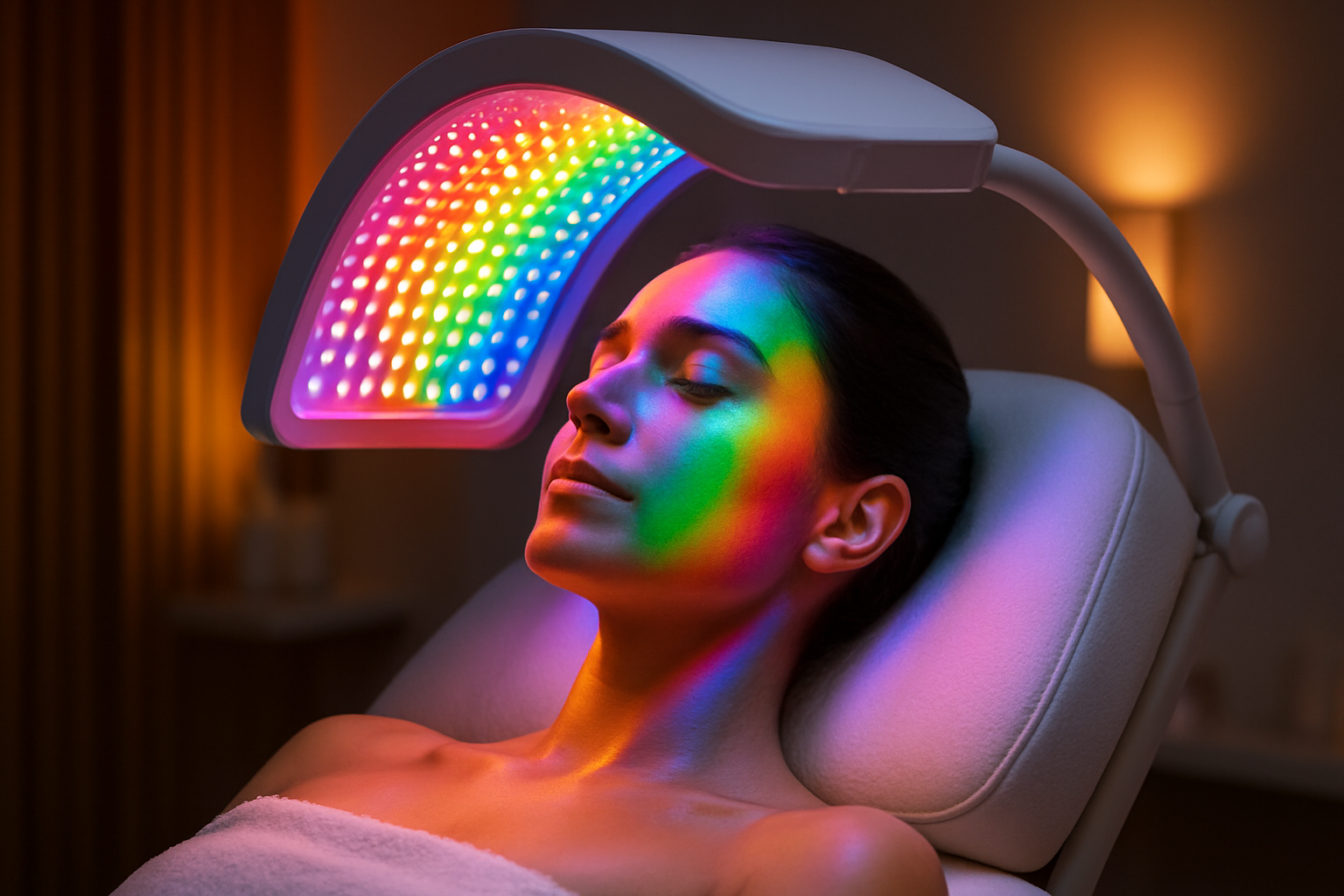Chromotherapy: The Colorful Path to Wellness
In the vibrant world of beauty and fitness, a lesser-known but intriguing approach to well-being is gaining traction: chromotherapy. This innovative practice, also known as color therapy, harnesses the power of different hues to promote physical, mental, and emotional balance. While the concept of using color for healing dates back to ancient civilizations, modern chromotherapy combines traditional wisdom with contemporary scientific understanding. As wellness enthusiasts seek holistic approaches to self-care, chromotherapy offers a unique fusion of aesthetics and therapeutic benefits, making it a fascinating subject for those looking to expand their wellness repertoire beyond conventional methods.

The Science Behind the Spectrum
Modern chromotherapy is based on the principle that different colors correspond to different vibrations and energy frequencies. Each color in the visible spectrum is believed to affect the body and mind in unique ways. For instance, red is often associated with stimulation and energy, while blue is linked to calmness and relaxation. Green is thought to promote balance and harmony, and yellow is connected to mental clarity and optimism.
Recent scientific studies have begun to shed light on the physiological effects of color exposure. Research has shown that certain colors can influence heart rate, blood pressure, and even hormone production. For example, exposure to blue light has been found to suppress melatonin production, affecting sleep patterns, while red light may stimulate alertness and cognitive function.
Chromotherapy in Modern Wellness Practices
Today, chromotherapy is finding its way into various wellness and beauty treatments. Spas and wellness centers are incorporating color therapy rooms, where clients can immerse themselves in specific color environments. These rooms use advanced LED technology to create a fully immersive color experience, often combined with sound therapy for enhanced effects.
In the realm of skincare, chromotherapy-inspired treatments are emerging. LED light therapy masks, which use different colored lights to target specific skin concerns, have become popular in both professional settings and at-home care routines. Red light is often used for anti-aging and collagen production, blue light for acne treatment, and green light for hyperpigmentation.
The Psychological Impact of Color
Beyond its physical effects, chromotherapy also taps into the psychological power of color. Color psychology, a well-established field, explores how different hues can affect mood, behavior, and cognitive performance. This aspect of chromotherapy is particularly relevant in creating environments that promote specific emotional states or enhance certain activities.
For instance, fitness centers are beginning to experiment with color-changing lighting systems in their workout spaces. A high-intensity interval training class might use energizing reds and oranges to boost motivation, while a yoga studio might opt for calming blues and greens to enhance relaxation and focus.
Integrating Chromotherapy into Daily Life
One of the most exciting aspects of chromotherapy is its potential for integration into everyday life. Unlike some wellness practices that require significant time or resources, color therapy can be incorporated subtly yet effectively into daily routines. This can be as simple as choosing specific colors for home decor, workout gear, or even meal plating to influence mood and energy levels throughout the day.
Some chromotherapy enthusiasts are taking this a step further by creating personalized “color prescriptions” for themselves. This involves identifying which colors resonate most strongly with their emotional and physical needs and then intentionally incorporating these hues into their environment and wardrobe.
The Future of Color in Wellness
As research in this field continues to evolve, we can expect to see more sophisticated applications of chromotherapy in both personal and professional wellness settings. The intersection of chromotherapy with other emerging technologies, such as virtual and augmented reality, opens up exciting possibilities for immersive, personalized color experiences.
Moreover, the growing interest in biohacking and personalized wellness suggests that chromotherapy could become an integral part of individualized health and beauty regimens. As we gain a deeper understanding of how different individuals respond to various colors, we may see the development of more targeted, data-driven chromotherapy applications.
In conclusion, chromotherapy represents a fascinating convergence of ancient wisdom and modern science in the pursuit of holistic well-being. While more research is needed to fully understand its mechanisms and efficacy, the growing interest in this colorful approach to wellness highlights our continuing quest for innovative, natural ways to enhance our health and beauty. As we move forward, chromotherapy may well paint a brighter, more vibrant future for the wellness industry, offering a spectrum of possibilities for those seeking to add a splash of color to their self-care routines.





